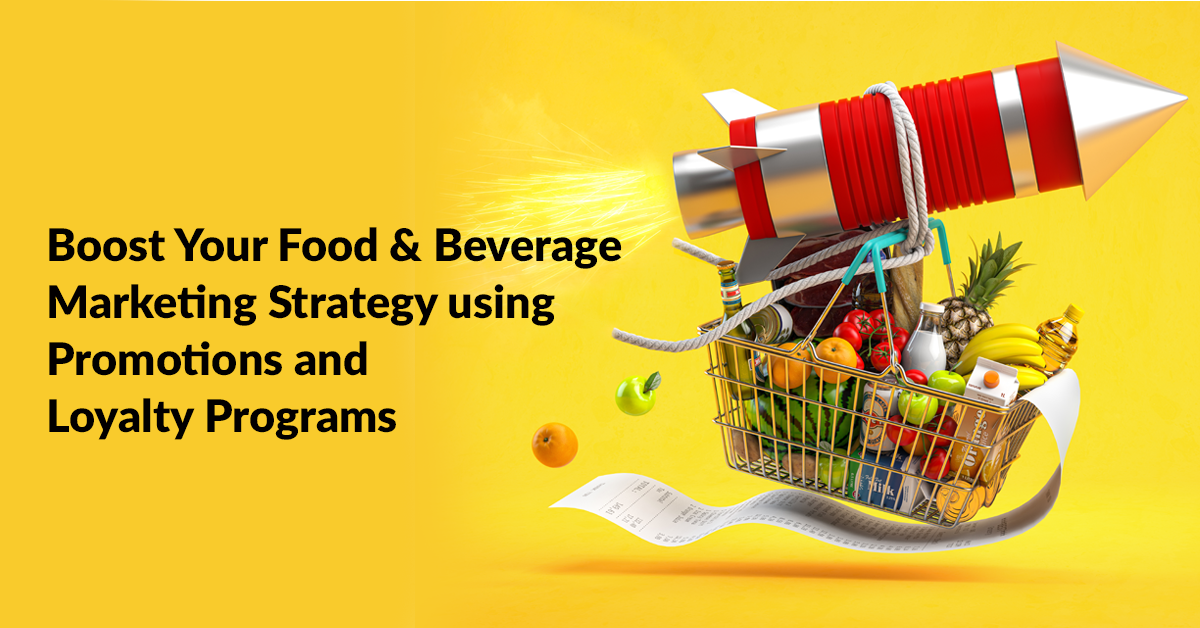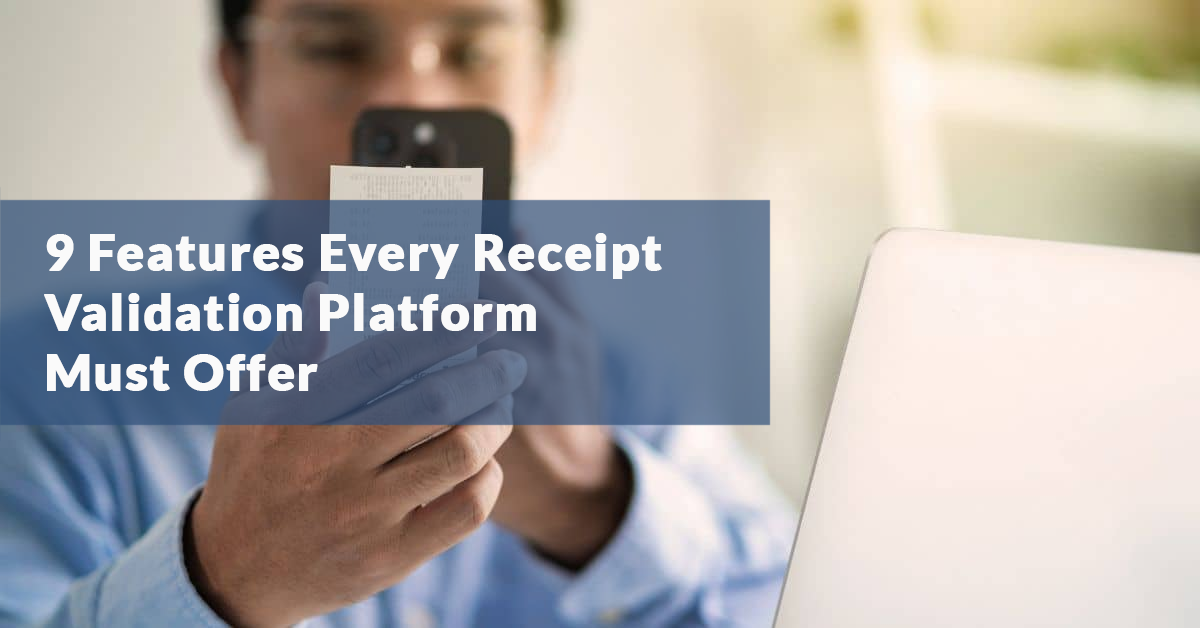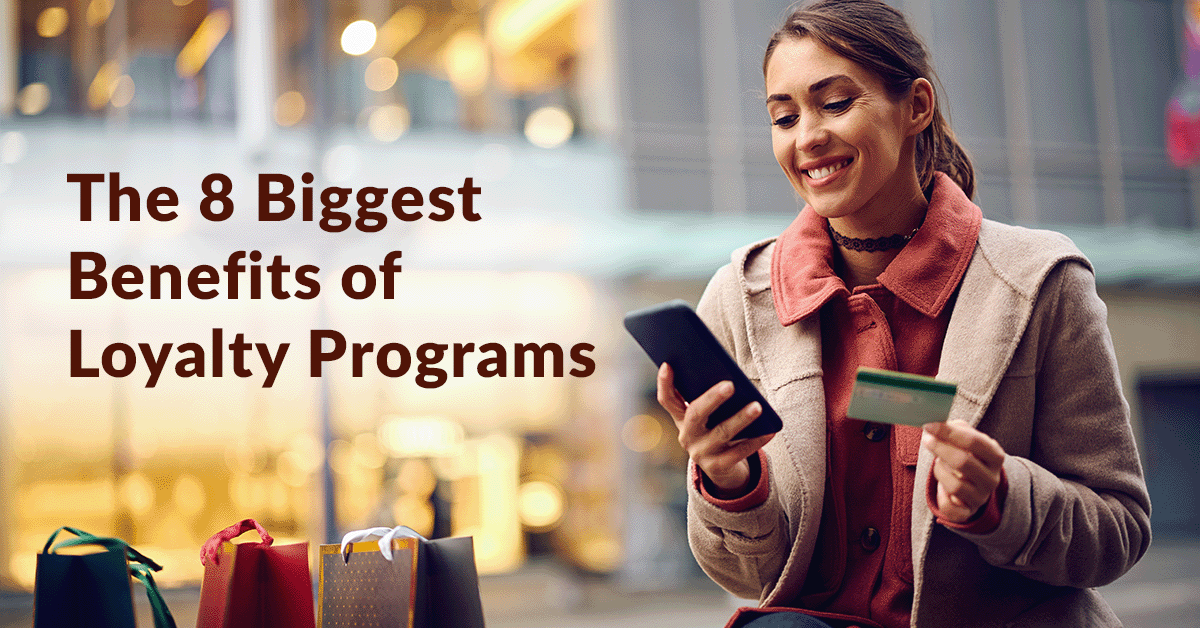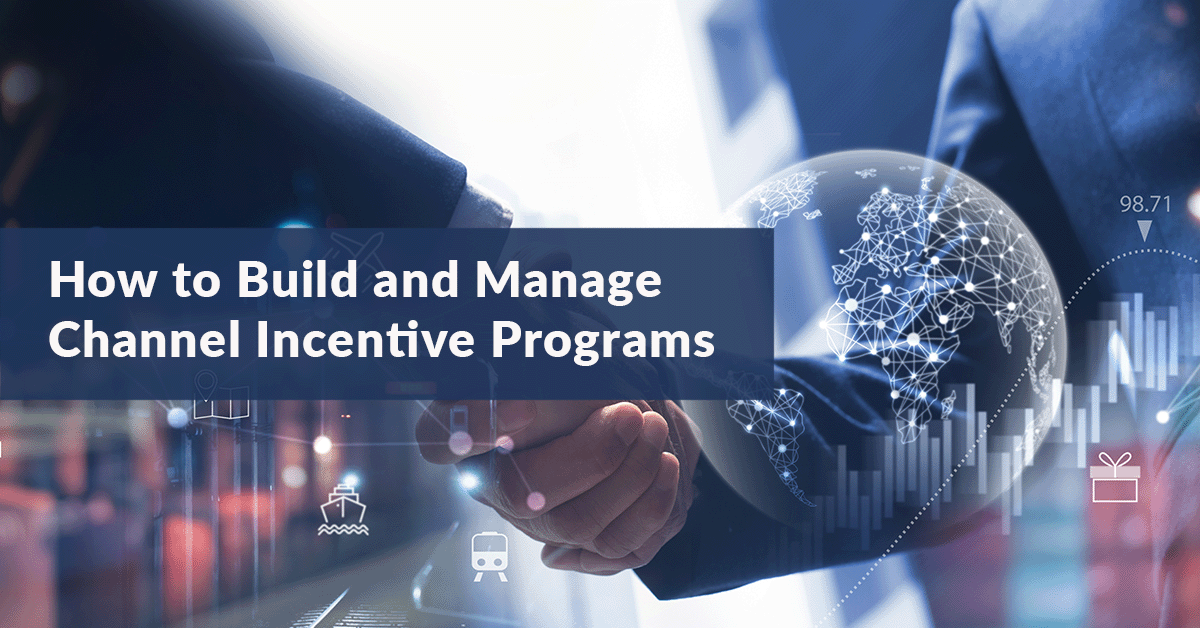The Food and Beverage (F&B) industry is a primary category of the Consumer Product Goods (CPG) industry and one that drives massive revenues across the globe. It’s also one of the most saturated and competitive, which means marketing is critical to get right. Promotions and loyalty programs are two strategies that can help food and beverage brands rise above the competition to win the hearts and wallets of consumers. Let’s look at how they help.
A Quick Look at the Food and Beverage Industry
The global food and beverage industry is saturated and highly competitive. In 2022, the global food market realized total revenues of US$8,670 billion, and the global beverage industry grew from US$6,576 billion in 2023 to US$7,000 billion in 2024.
CPG food categories comprise both processed and natural food for humans and pets, while beverages refer to both alcoholic and non-alcoholic. Distribution channels include supermarkets such as Krogers (US), Tesco (EU), and Carrefour (France), convenience stores, beer, wine, and liquor stores, specialty food stores, ecommerce sites, direct-to-consumer (DTC) sites and more.
This is a fast-moving industry, and many trends impact where, how, and for how much food and beverage products are bought and sold. The pandemic has had a lasting effect on how products are purchased, and inflation is pushing these changes even more. In this industry, if you turn away for a few minutes, some new trend will appear, impacting how brands should market their products.
Some of the CPG food trends to know today include:
- The desire for sustainable products and packaging, including locally sourced, organic, sustainable farm practices, as well as reusable, compostable, or recyclable packing.
- A focus on healthier options, such as clean label products (no additives, artificial flavors, preservatives, or dyes).
- The growth of grocery delivery (the global food delivery market generated over US$1 trillion in 2023, of which US$640 billion was from grocery delivery alone).
- The rise of ready-made meals, private labels, and food subscription boxes.
- Challenges with amount of processing and costs required to produce plant-based alternatives at scale at a price point that consumers are willing to pay.
- The blending of online and offline channels.
With these trends and the industry's overall competitiveness in mind, food and beverage brands need to find marketing strategies that will help drive revenue and differentiate the brand and its products.
Key Components of An Effective Food and Beverage Marketing Strategy
No single food and beverage marketing strategy will work for all situations. Brands need to use a combination of strategies, tactics, and campaigns to drive brand awareness, increase sales, and build brand loyalty.
The starting point should always be to clearly define and understand the target audience for your brand or particular products. Establishing a continuous dialog with the target customers helps you understand their wants, needs, and expectations over time. With this understanding, you are better prepared to position the brand right and drive CPG marketing strategies that will work best for your company.
In terms of food and beverage marketing levers to pull, here are a few to consider, which include a mix of instore and digital strategies:
- In-store sampling and demos, along with shelf location.
- Product packaging.
- Promotions including sweepstakes, contests, BOGO, gift with purchase and others.
- Social media marketing through owned social channels (highly visual, including images, video, and user-generated content (UGC)).
- Paid advertising.
- Influencer and food blogger collaborations.
- Brand websites and content marketing (recipes, cooking tips, customer testimonials, polls, and quizzes).
- Discounts, coupons and rebates.
- Loyalty programs.
- Experiential marketing (e.g., pop-up stores).
There is so much to discuss related to each of these strategies, but we'll focus on two that work very well: promotions and loyalty programs.
The Power of Promotions in Food and Beverage
The CPG food and beverage industry is very competitive, but consumers look for two things most—products that taste good and are priced right. As a marketer you can help show consumers how great your products are utilizing promotion. You can also implement promotions that affect how consumers think about the price of products.
There are a number of different types of promotions you can try, including:
- Contests and sweepstakes.
- Gift with Purchase, instant-win, text to win.
- Promotions: Sweepstakes, GWP, Instant win, punch card, social
Coupons and Samples
- Discounts and bundling offers (e.g., buy one get one free, buy two or more, pay less per item).
- Seasonal promotions: Holiday, Back to school, Summer, etc
- Event-based promotions: Sports events and others
- Free sample offers
- Discounts and bundling offers (e.g., buy one get one free, buy two or more, pay less per item).
- Limited time offers.
Promotions provide several important benefits. First, they help attract new customers to the brand and enhance brand awareness. They also help drive sales through purchasing multiple products or combinations of products, as well as boost sales during off-peak times. This is particularly true of promotions and sweepstakes. Of course, the right reward is important to - such as an experiential reward relevant to your audience, a free gift, or cashback. To learn more about how they drive awareness, engagement and sales (and which to choose when), see our guide to contests vs. sweepstakes.
If your promotions strategy includes purchase-based entries (e.g. consumers upload a receipt to show they made a purchase), you can glean a lot of essential data from consumers, including average spend, total basket spend, location data, preferred retailers, brand and category-level shopping data, and products bought together. To generate first party data and get valuable consumer insights with your promotions or loyalty program, see our guide tor receipt marketing.
Contests, Sweepstakes combined with purchase-based entries are great ways to generate brand buzz and sales (or trials), and give your company an opportunity to get detailed insights into your audiences spending habits. So, let’s also look at how you can use an exiting or new loyalty program to have a continuous dialogue with your target customers.
CPG Loyalty Programs
CPG brands can have loyalty programs even if they sell their products through retailers. Loyalty programs help encourage deeper consumer engagement, leading to stronger brand loyalty. Consumers usually sign up for loyalty programs with food and beverage brands to earn rewards or access unique, personalized experiences.
A brand encourages sign-up for the program by offering sign-up bonuses or immediate offers. Consumers then continue to earn points through purchases and other activities such as playing games, completing surveys or quizzes, creating user-generated content, uploading receipts, entering contests or sweepstakes, and referring friends. Points are then exchanged for gift cards, used towards future purchases, or used towards other items or other relevant rewards.
Loyalty programs are a useful umbrella for your seasonal promotions and can generate a wealth of zero- and first-party customer data that a brand can use to improve its understanding of its customers and influence spending.
Food and Beverage Promotions and Loyalty Examples
To make it more concrete, let’s look at some examples of innovative promotions and loyalty programs by some top brands and how they’re engaging with their audiences.
Kellanova - Minecraft Promotion Partnership
Kellanova, a global leader in snacking, cereal, noodles, and plant-based foods, including the Kellogs and Pringles brands, partnered with Microsoft’s Minecraft to help celebrate its 15th anniversary. When a consumer buys a participating Kellanova product, they earn a redemption code for Minecoins that can be redeemed at a microsite.
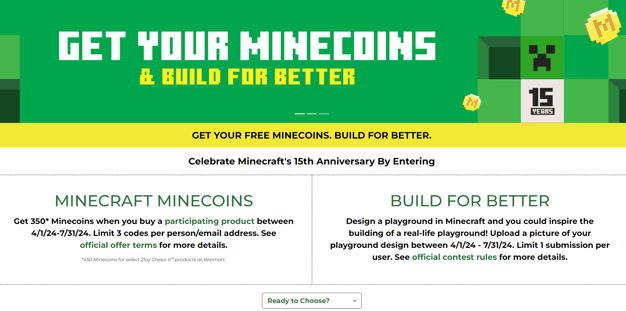
The promotion also included a no-purchase-necessary contest where consumers could design a playground in Minecraft and upload a picture of the design for a chance to have their design win and be used to inspire a playground in a real community. The grand prize included participating in the design process and attending a ribbon-cutting ceremony.
This promotion works on a couple of levels. First, it encourages repeat purchases of Kellanova products to earn Minecoins (consumers can earn codes up to three times). Second, by uploading a receipt to get the redemption code, Kellanova captures a lot of customer shopping data, including popular retailers, competitor information, and more. To learn more about the program, click here.
Jim Beam Tres Generaciones Creates Sweepstakes to Leverage Music Partnership
Beam Suntory Tres Generaciones created a sweepstakes to help it drive brand awareness and increased visibility at retail locations. This no-purchase necessary sweepstakes, including displays at retail locations.
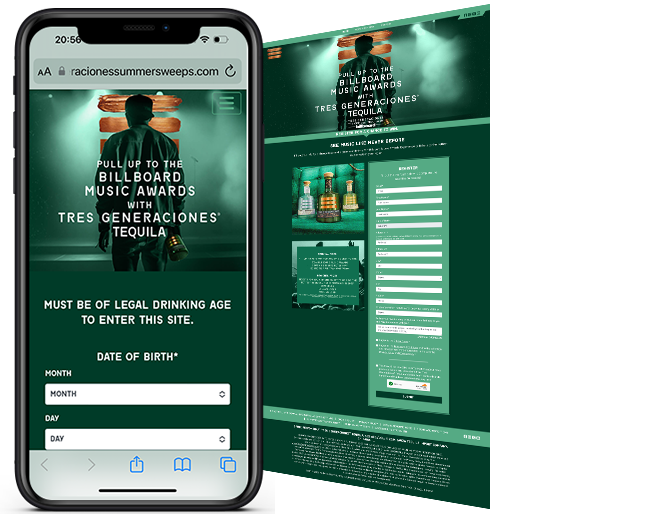
Participants must be of legal drinking age to enter, and winners will attend a once-in-a-lifetime VIP Billboard Music Awards Experience (National Prize) or receive tickets to the hottest music fests in their region, including Coachella, Rolling Loud, or Lollapalooza. Entries are limited to three per person/email address.
This promotion works for Jim Beam because it helps them generate brand awareness among a younger age group that loves attending concerts and is well aligned to their products.
Paws Points Loyalty Program
The Paws Points Loyalty Program is aimed at cat lovers who can earn points by purchasing a range of products, including cat food, treats, and litter box supplies. Program members submit purchase receipts to earn points that can be exchanged for rewards such as cat-themed gifts, and product coupons. Members can also donate their points to their favorite shelter and earn additional points through other behaviors.
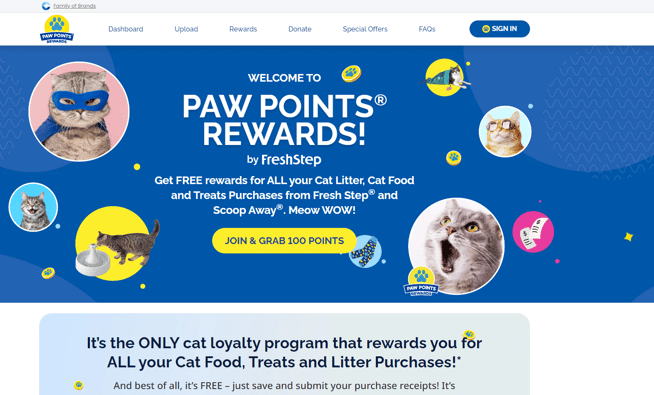
This loyalty program works because cat owners regularly buy products for their cats, and now they can earn points and rewards for doing so. The data obtained helps brands understand the purchase mix of customers as well as the total spend of the cat owner's basket. Learn more here.
Nestle KitKat Win a Kayak Sweepstakes
Nestle kicked off a summer sweepstakes in which participants could win one of 20 KitKat-themed kayaks. To earn one entry, consumers uploaded a receipt of a qualifying Nestle product.
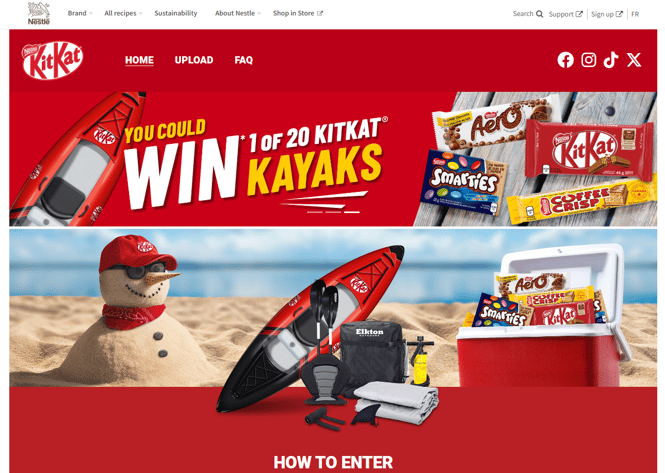
Similar to other promotions, by providing receipts, Nestle is collecting a wealth of shopping data from customers to help it improve future promotions and marketing and understand customer shopping patterns.
P&G Good Everyday Loyalty Program
Procter and Gamble (P&G) created the Everyday Good Loyalty Program to engage its customers. Members earn points through receipt scanning and participating in other activities, including surveys and quizzes. Points earned are used towards future purchases (coupons), entries into sweepstakes, or traded in for donations to important causes.
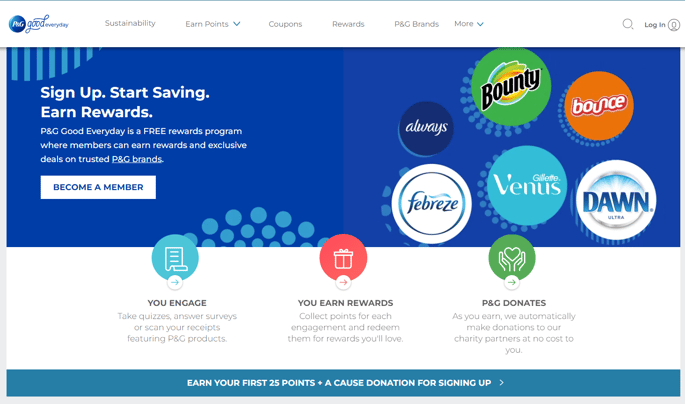
This loyalty program is a great way for P&G to engage with millions of customers who buy its products daily. The P&G Good Everyday loyalty program targets customers who believe in important causes and want to make a difference. All the data the brand collects about its customers helps it improve its products, marketing, and promotions and helps grow a community of caring people.
Getting Started: Engaging Customers Through Promotions and Loyalty Programs
Create a Food and Beverage Promotion Calendar
Marketers who want to hit the ground running with their marketing strategies need to create a Food and Beverage Promotion Calendar. This calendar identifies key dates and events the brand wants to align with its promotions and overall marketing goals. This retail calender provides a good start, including sporting events, key retail promotions and special days like “national pizza day” and “national pet day”.
Successful marketers include a mix of short-term and long-term promotions in their promotions calendar, regularly review and adjust plans to ensure they remain relevant, and adjust as trends and events change around them.
One off promotions are a first step. A regular series of promotions planned throughout the year is better, and a loyalty program to tie it all together is an even more advanced approach.
Leverage The Right Technology
Along with creating a promotions calendar, marketers need technology to help them manage promotions strategies. For example, loyalty management software helps marketers manage promotions or the end-to-end process of setting up a loyalty program, inviting and engaging with members, as well as capabilities to manage and distribute rewards.
Other software includes receipt processing, contest management, sweepstakes management, and customer data analytics. Without this technology, food and beverage brands would find it impossible to manage all the aspects of promotions and loyalty programs.
3 Tips to Create the Best Promotions and Loyalty Strategies
Consider these three tips to help you build strategies your customers will love and want to participate in.
- The best promotions and loyalty programs are built on a deep understanding of the customers the brand wants to reach. Use your customer insights to segment consumers and create highly targeted campaigns and promotions. Consider building a tiered loyalty program that rewards higher spending or engaging members with bigger rewards.
- Include interactive and engaging promotions in your plans. Gamification is a popular way to encourage engagement and learn more about your customers, as are interactive social media campaigns. Also, remember in-store experiences and events to reach customers everywhere they are.
- Don’t forget about the importance of customer feedback and interaction. Find ways to encourage reviews and testimonials, as consumers trust their peers over brands. Like some of the examples above, build a community around your brand that stands for something important.
Wrapping Up
Food and Beverage marketing doesn’t need to be boring. The opportunities for marketers to create engaging promotions and loyalty strategies that customers will love and want to participate in are endless. The key is to pay careful attention to the trends that affect this industry and employ strategies that speak to what’s important to consumers today.
To learn how Snipp, can help your company with contests, sweepstakes or other types of promotions, contact us here for a short consultation.







